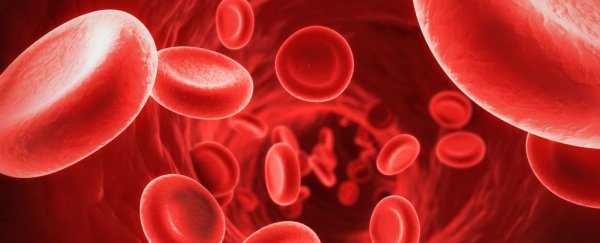Stem-cell scientists have upended current thinking on the way human blood is produced inside the body, opening the way for new studies and new treatments. The findings of principal investigator John Dick and his team from the University of Toronto in Canada challenge ideas that have been in place since the 1960s.
Essentially, the new research suggests that blood is formed in fewer steps than previously believed: earlier evidence indicated stem cells went through several intermediate steps before becoming white or red adult cells, like branches coming out from a tree trunk. Dick and his team think the process is much quicker and simpler, though their findings have yet to be confirmed by independent researchers.
"The whole classic 'textbook' view we thought we knew doesn't actually even exist," said Dick. "Instead, through a series of experiments we have been able to finally resolve how different kinds of blood cells form quickly from the stem cell – the most potent blood cell in the system – and not further downstream as has been traditionally thought."
The team of researchers has also been able to prove that the blood system is two-tiered, changing between early human development and adulthood. Up until now, it was believed that the system stayed stable once formed.
Nearly 3,000 different cells were analysed as part of the research, taken from volunteers of various ages, and the findings could open the way to personalised therapies and treatments in the future.
"Our discovery means we will be able to understand far better a wide variety of human blood disorders and diseases – from anaemia, where there are not enough blood cells, to leukaemia, where there are too many blood cells," says Dick. "Think of it as moving from the old world of black-and-white television into the new world of high definition."
As the process seems to differ when babies are still in the womb, the research could also help unlock the causes of some childhood cancers and other biological mutations.
What's more, the discoveries made by Dick in collaboration with his colleagues could one day enable us to manufacture and engineer blood cells in a lab: and that could ultimately save the lives of patients waiting for blood transfusions if no suitable human donor can be found in time. The research builds on Dick's previous work in the field that stretches back for 25 years.
"If this work is replicated by other groups, we rewrite the textbooks," UC San Diego's Larry Goldstein, who wasn't involved in the study, told The San Diego Union-Tribune. "First, there's this very major shift in how blood cells are built from the foetus to the adult, and second, the adult lineage relationships are completely different than what we thought."
"It's the right kind of analysis and relies on surface markers, which we've known always seems suspect, and the methodology seems sound, and it's from a group with an excellent reputation," added Goldstein.
The researchers' findings have now been published in the journal Science.
